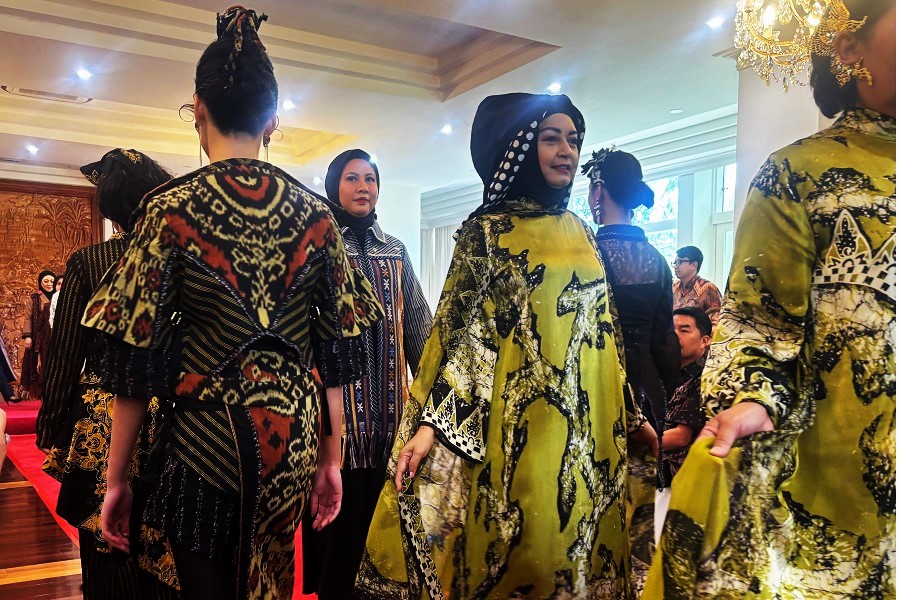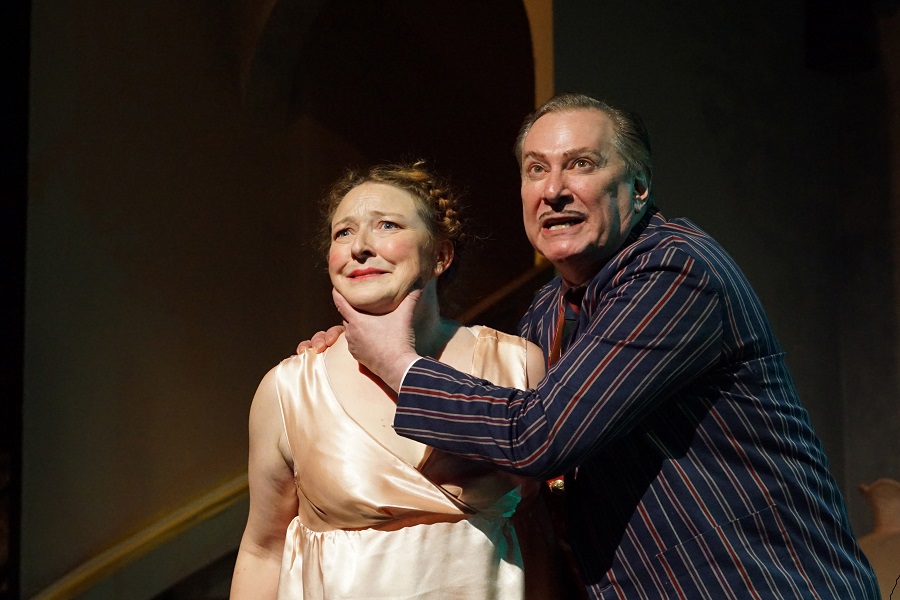Craft / Batik Day in Canberra. At Wisma Indonesia, Red Hill. Reviewed by HELEN MUSA.
It was Batik Day at the residence, Wisma Indonesia in Red Hill on Saturday, as fashion-minded Canberra women gathered to view the latest in fashion design from our huge northern neighbour.
Batik, the famous wax-resistance dyeing process used in many countries around the world (Nefertiti was clad in batik) is universally acknowledged to have reached its artistic apogee in Central Java, so that in 2009 Indonesian batik was designated a UNESCO Intangible Cultural Heritage, meaning that the event also served as an outlet for public education on batik.
Saturday’s fashion exercise was largely the brainchild of Marsia Gustiananda Pramono, wife of Indonesian ambassador Siswo Pramono, and was part of the Indonesia Modest Fashion Week Melbourne.

It involved seven well-known Indonesian designers, Sugeng Waskito, Essy Masita, Alia Siregar, Vita Wadijono, Jenny Rozha, Siska Dart, and Eko Purwanto.
A kind of roadshow, which will also visit Sydney before the big Melbourne event, it was intended as a bridge between cultures, and involved batik from Sumatra to Java, Nusa Tenggara and even Papua.
Most striking was the mixture of batik with printed and woven textiles in a canny, stylish mix of indigenous elements with modern designs, so that one garment, for instance, combined the traditional Indonesian kebaya with a contemporary bustier.

By no means did all the garments involved hijab, and most models were members of the Indonesian community and their Australian friends.
Batik printing, like many other industries, has not been exempt from contemporary concerns about the environment, since dyes are often washed into river systems, so one interesting trend on show was eco-batik where the prints were based on leaves.
Other garments used traditional boutique flowers but cut, spaced out and appliqued onto fabrics then tailored into trench coats.
More characteristic of the parade, however, were the flowing silk batik gowns, which swirled as the model walked up and down the catwalk.
Who can be trusted?
In a world of spin and confusion, there’s never been a more important time to support independent journalism in Canberra.
If you trust our work online and want to enforce the power of independent voices, I invite you to make a small contribution.
Every dollar of support is invested back into our journalism to help keep citynews.com.au strong and free.
Thank you,
Ian Meikle, editor






